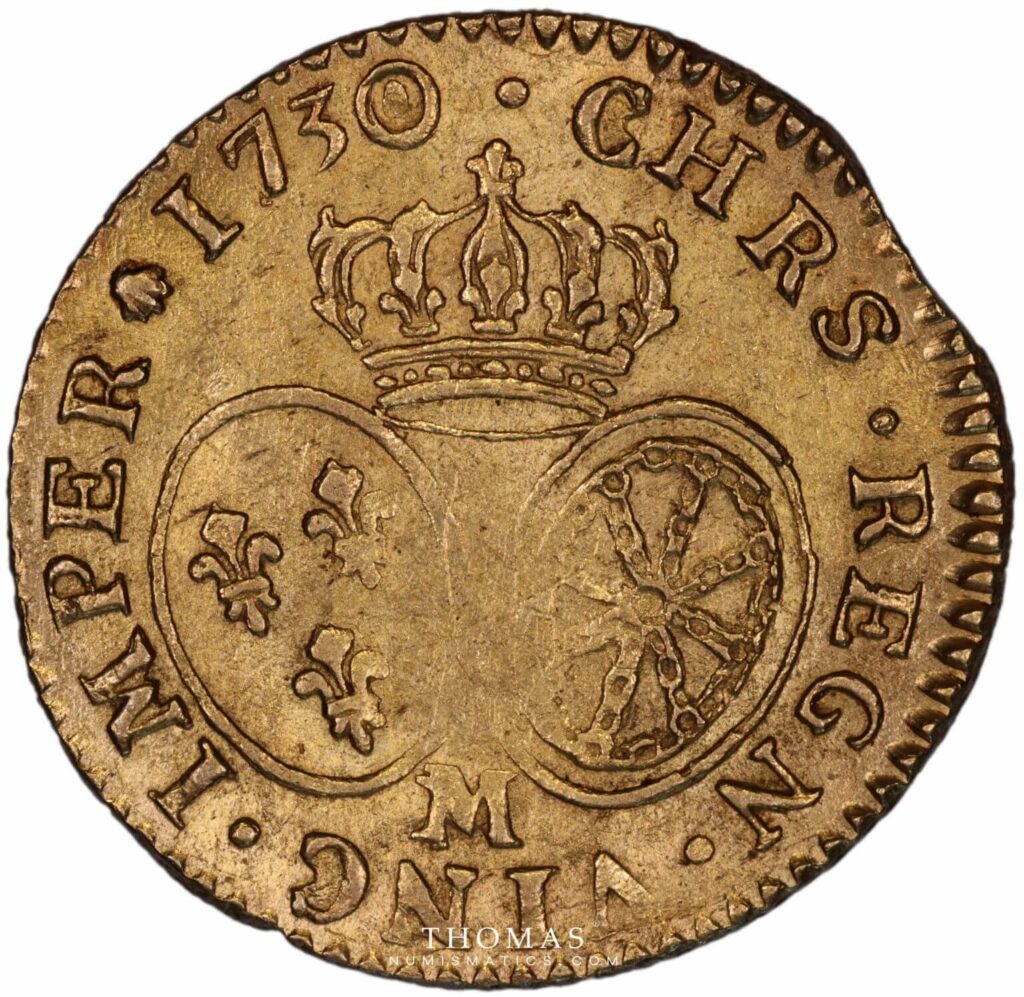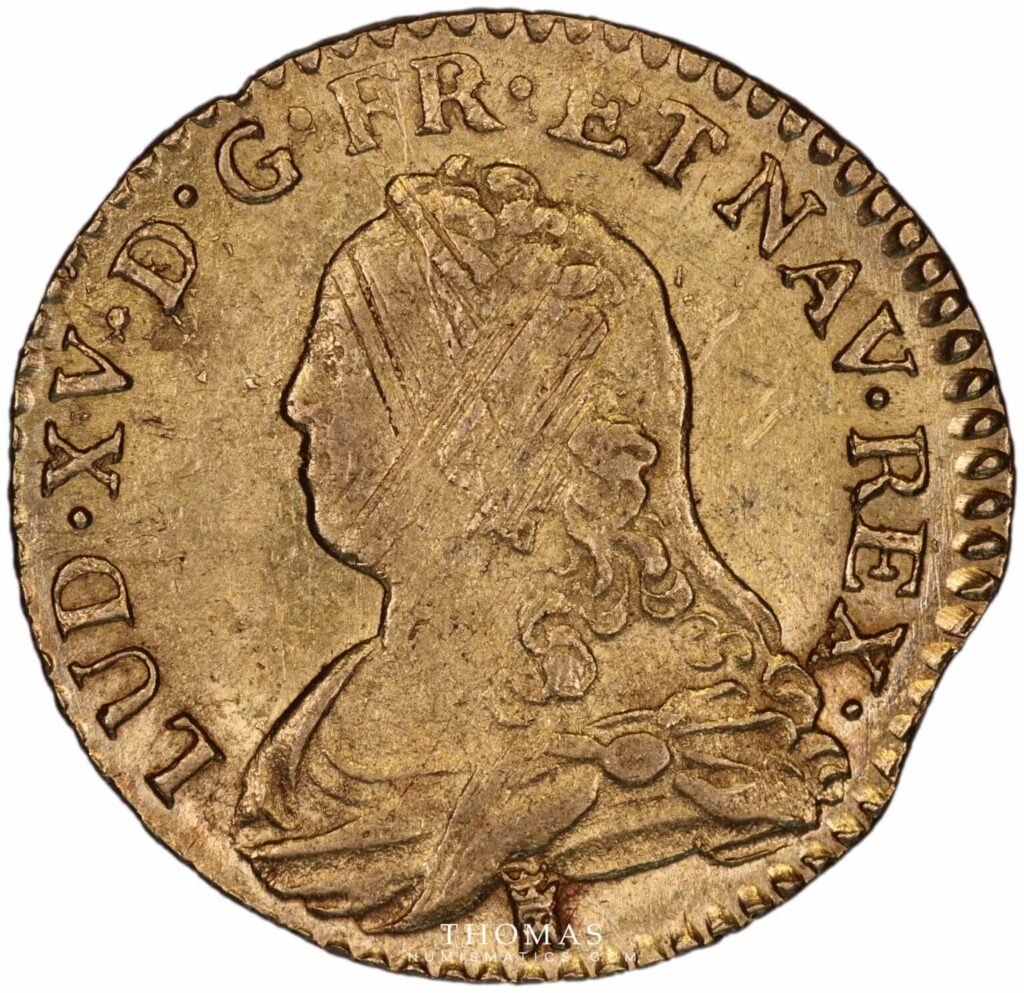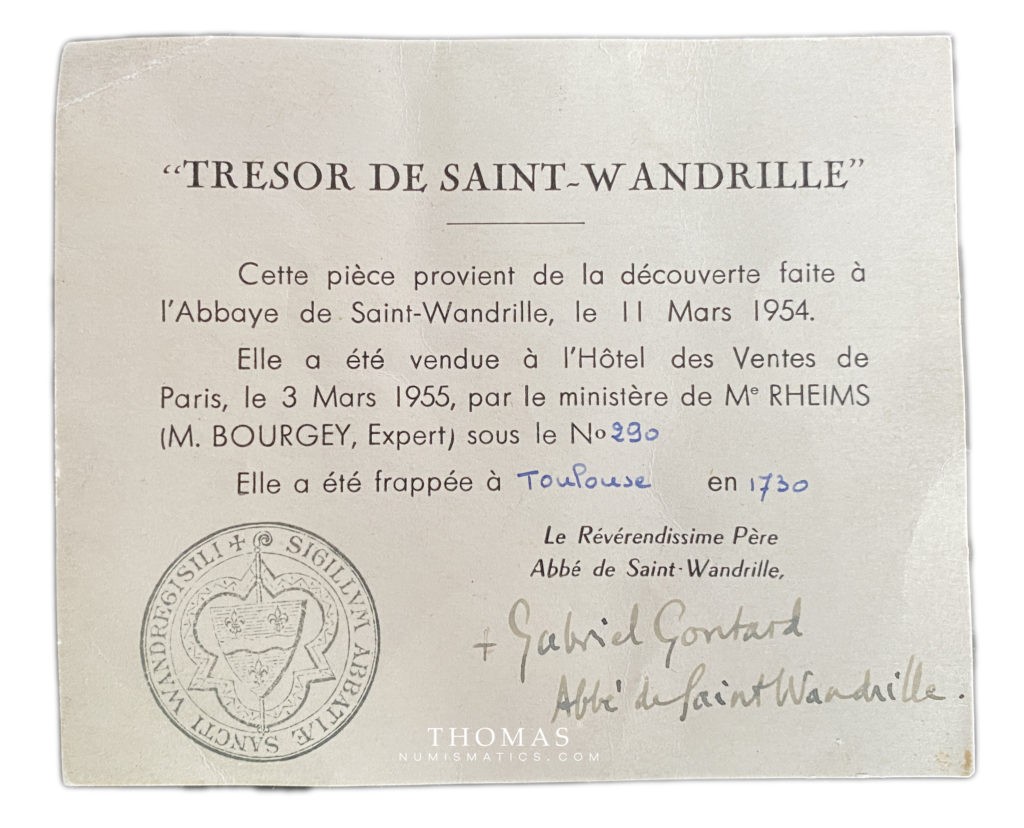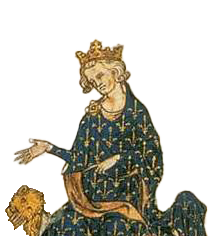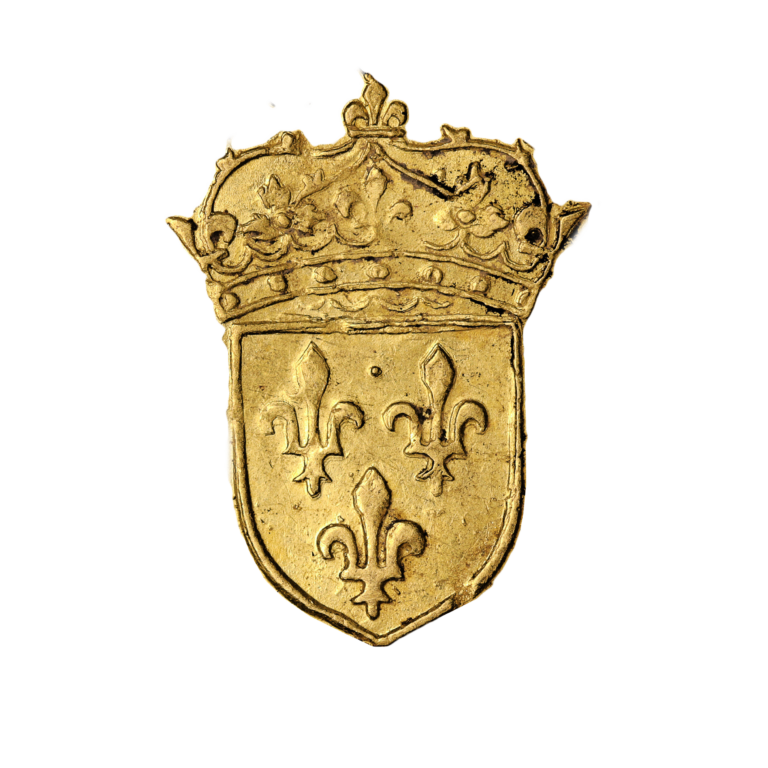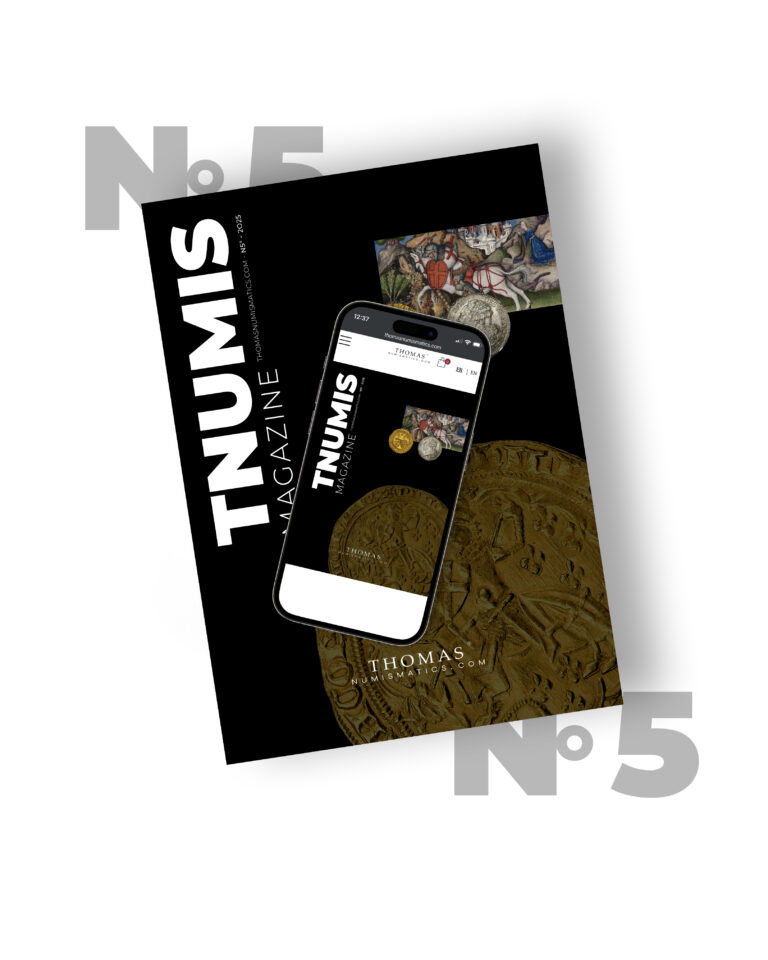
Discover all the news and articles from TNUMIS Magazine exclusively
The Treasure of Saint Wandrille Abbey
The abbey of Rives-en-Seine, located in the Norman department of Seine-Maritime, was the scene of an incredible treasure hunt in 1954. Orchestrated by Father Dom Donaint, a scouting game turned into a real quest and revealed one of the greatest abbey treasures of the 20th century: the one called Saint Wandrille.
The Fontenelle Abbey of Saint Wandrille
Founded in the 7th century by the priest Wandrille and intended to host a community of monks from the Solesmes congregation, the Fontenelle Abbey of Saint Wandrille is considered as one of the first Benedictine abbeys in Normandy. Great abbots have followed one another in this majestic and magical place, located in the Seine river loops, about 35 km away from Rouen. It is still inhabited today by monks.
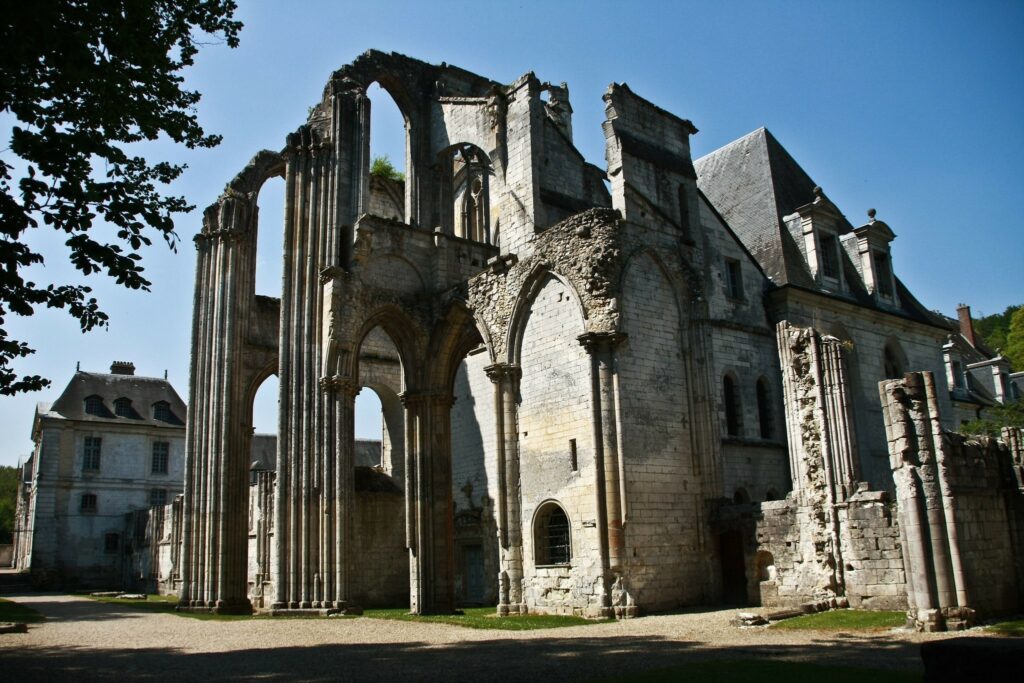
The discovery of the treasure of Saint Wandrille Abbey
On 11th March 1954, the Cub Scouts of the former municipality of Saint Wandrille gathered on the site, as per every Sunday. On that same day, the priest Dom Donaint had organized a gigantic wild treasure hunt on the theme of flowers.
The children, aged 12 or 13, had a great time. So much so that one of them, Jean-Pierre Mazé, suggested to the others to seek out a real treasure. The idea came to him when he came across a hole in the fence wall, a space that delineated the daily life and the activities of the monks. The hole did not contain anything interesting but a few hazelnuts, which certainly belonged to field mice.
Jean-Pierre and his friends did not give up. They walked along the fence, observing each stone until they reached the Saint-Saturnin chapel. They went around it and checked the wall on the other side. Suddenly, Jean-Pierre saw a stone a little different from the others, carved with a mysterious sign. The children couldn’t believe it! Jacques Blot, one of them, started to unseal it and found, at the bottom of the hole, a terracotta urn. About twenty centimeters high, the urn was covered with a lead sheet and contained gold coins. The apprentice researchers rushed to inform Father Donaint and continued their excavation. A few meters away from the first discovery, Pierre Lemousu and Daniel Blot discovered another drawing, hiding another clay pot, and then a third one!
Dozens of gold Louis d’or
The next day, a report was drawn up and the bailiff sequestered the treasure of Saint Wandrille Abbey five days upon discovery. The inventory showed 501 Louis XV coins, Louis d’or aux lunettes and Louis d’or au bandeau, similar to the emblematic coins of the Mouffetard treasure. The three pots contained exactly the same number of coins 167.
The treasure is divided in two. One share goes to the abbey, as the owner of the walls, and the other share is intended for the parents of the curious children. The sharing is defined as follows:
- 231 Louis d’or aux lunettes and 19 Louis d’or au bandeau
- 230 Louis d’or aux lunettes and 20 Louis d’or au bandeau
A draw was held on 17th October 1954 to split the lots.
The abbey decided to sell its share and to keep only one coin of each type. On 3rd March 1955, 304 Louis XV coins were offered for auction at the Salle Drouot (one of the parents joined the project). The auctioneer Maurice Rheims and the expert Emile Bourgey were in charge of the public sale. It was a real success, reaching the sum of 3 310 000 francs. Unfortunately or fortunately, the abbey’s outbuildings burned down four months later, so the money was used to restore them.
The mysterious treasure of Saint Wandrille Abbey
The story made all the press news. Many onlookers came to walk around the abbey of Saint Wandrille. Where does this treasure come from? Who buried it and why? The most recent piece dates back from 1748, so the loot has been hidden for more than two centuries. Nothing indicates the reasons for this hiding, the region being at peace at that time.
The treasures of Saint Wandrille were hidden under a stone outside the wall of the abbey, as if its rich owner was counting on the protection of the church. He had certainly marked the stones to return and collect them later. On one of them, a pointed circle had been drawn, a symbol of gold.
The legend continues. It’s even being said that Jean-Pierre had found a parchment under the first pot that indicated 28 hideouts, but we never knew what happened to this document.
A fourth clay pot was discovered in the 1980s, this time buried underground. A hole and a stone were found, but no trace remained of the pot neither of the researcher…
In 1996, Didier Audinot, the treasure specialist historian, wrote in his Manual of detection and treasure hunting (Manuel de détection et de chasse aux trésors): “later, in 1989 or 1990, more than thirty years after the discovery of the three pots, a wise prospector, whose name will never be known, spotted a fourth stone with a sign that had never been seen before (…). The hole made by this researcher in the 1980s is still visible: he left without filling it up.”
The mystery remains unsolved. Are there still 24 other treasures to be discovered at Saint Wandrille?
Sources :
Trésors, légendes et réalités, Sabine Bourgey, 1996
Site web de Sabine Bourgey
Abbaye de Saint-Wandrille
La toile scoute
Le blog des chercheurs de trésors
